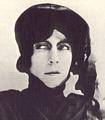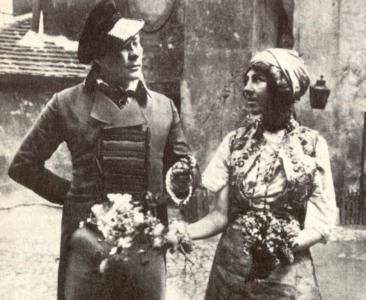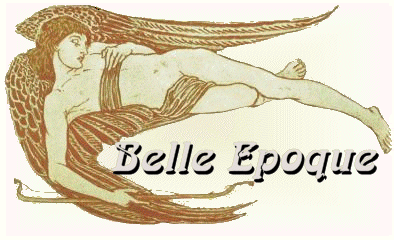The Belle Epoque in Europe
Germany: Early commercial and artistic success

On the 1st November 1895, the brothers Emil and Max Skladanowsky (1863-1939) presented the first "living images" in the Berlin variety theatre Wintergarten. They showed filmed fair spectacles like Das boxende Känguru (The Boxing Kangaroo) and street scenes of Berlin. The third brother, Eugen, lateron had the idea to create funny interludes and made short films like Die Fliegenjagd (The Fly Hunt) and Eine moderne Jungfrau von Orléans (A Modern Jeanne d'Arc, 1896) having a running time of about 15 minutes. But Skladanowsky's machine technically had not the standard of Lumière's cinematograph and moreover they had not the money to improve and distribute their invention.
Oskar Messter who was a specialist in producing projectors was more successful since he also produced his own films which meant to his clients that they regularly got new products. At first he also filmed street scenes in Berlin; but in 1896 he opened the first "artificial light studio". He started with little burlesques like Frisch gestrichen (Fresh Painting) and Die gemütliche Kaffeetafel (Drinking comfortably coffee together) for which he filmed his own family.

Until 1910 the German film production was rather insignificant. But in this year, Henny Porten (1890-1960) played under Messter her first main part in the melodrama Das Liebesglück einer Blinden, (The Love Luck of a Blind Woman) which had a great succes. The next year, many new cinemas opened in Berlin. It was also in 1911 that the Danish actress Asta Nielsen (1881-1972) went to Germany together with her husband, the director Urban Gad (1879-1947). Asta Nielsen's first German film was Nachtfalter (Moth, 1911) which was followed by many others like Der fremde Vogel (The Strange Bird, 1911), Die arme Jenny (Poor Jenny, 1911/12), Das Mädchen ohne Vaterland (The Girl Without Native Country, 1912), Engelein (Little Angel, 1913), Die Suffragette (The Suffragette, 1913) and Die ewige Nacht (Eternal Night, 1914). All these films were directed by her husband Urban Gad, but the success, in the first place, was due to Asta Nielsen whose shading interpretation and deliberate gesture made her a great star long before the star epoch.
In 1913, 313 films had already been produced in Germany, most of them consisting of two or three acts. Ernst Lubitsch (1892-1947) who became a famous director in Germany and lateron in Hollywood had his first screen success as an actor in 1913 in the film Die Firma heiratet (The Company Marries) directed by Carl Wilhelm continued shortly later by Der Stolz der Firma (The Company's pride, 1914).

Meanwhile, the theatre actors also began to be interested in filming. Albert Bassermann (1867-1952) for example played in the film Der Andere (The Other One, 1913) directed by Max Mack (1884-1973). The famous Berlin theatre director Max Reinhardt (1873-1940) made together with actors of his theatre company Eine venetianische Nacht (A Venetian Night, 1913). But more significant was the actor Paul Wegener (1874-1948): He played in the film Der Student von Prag (1913) directed by the Danish Stellan Rye (1880-1914). The mythical story of a poor student selling his reflected image to the devil was a great success abroad, too. As a director, Wegener had as much success, before the First World War, for example, with the film Der Golem (The Golem, 1914) playing also in the world of fairy-tales and myths.
Here you can already find the beginning of the cinematographic expressionism which made - after the First World War - the German film famous all over the world.
